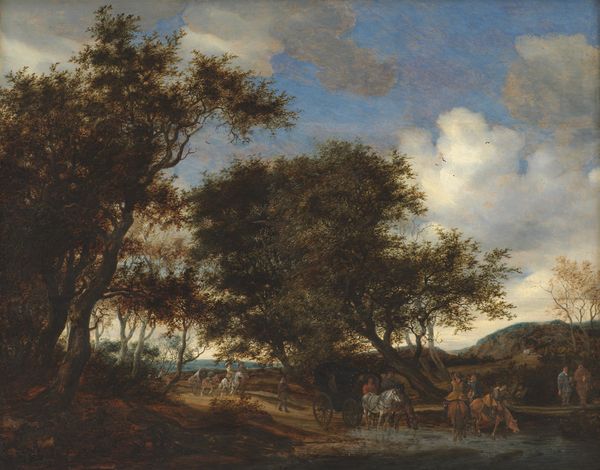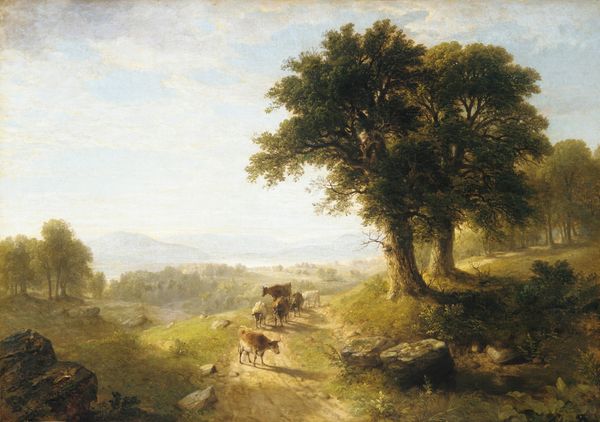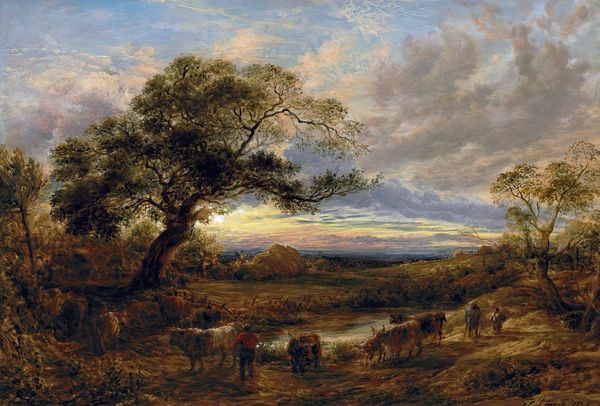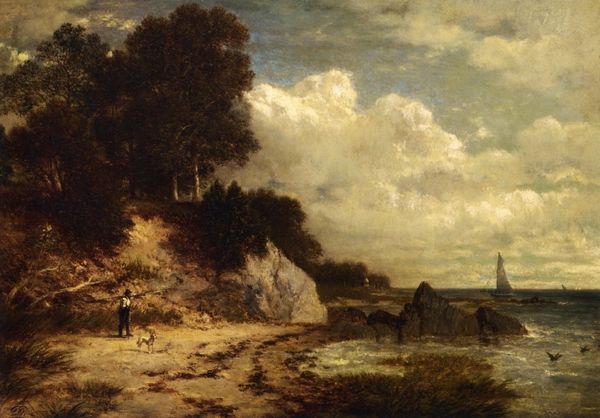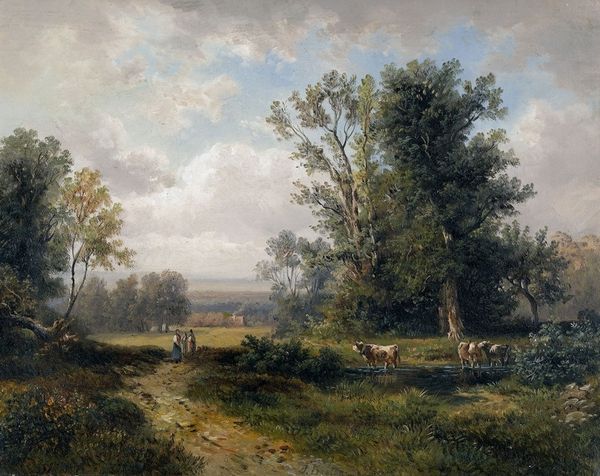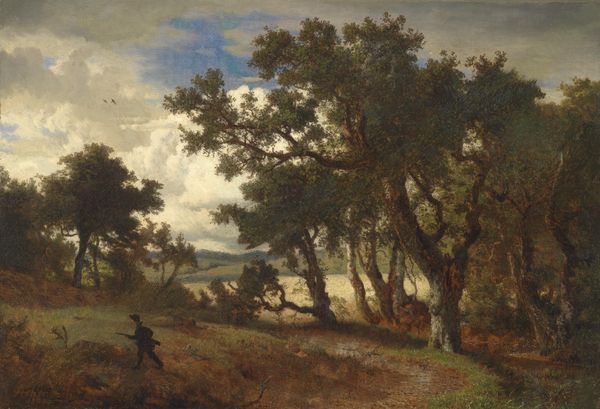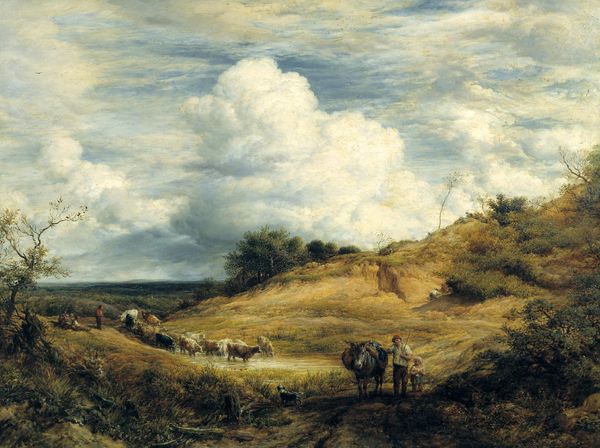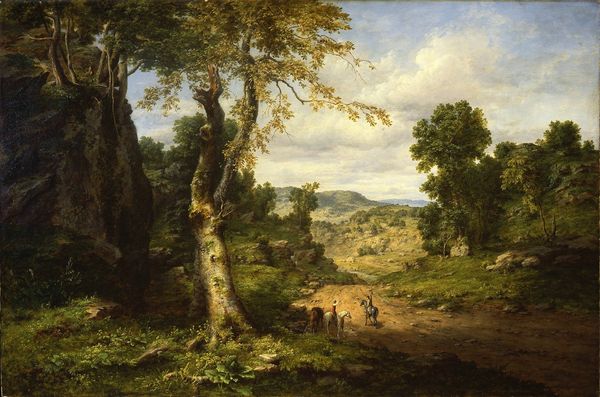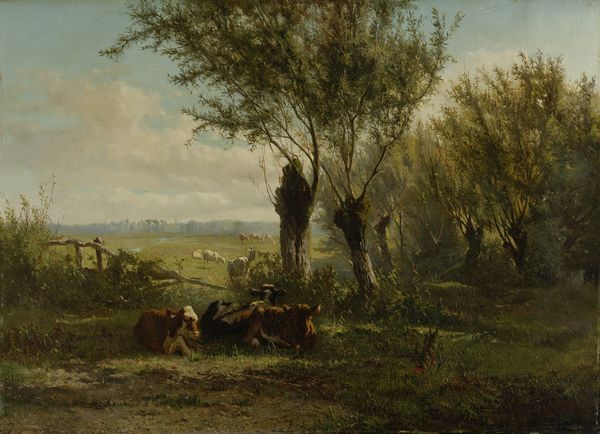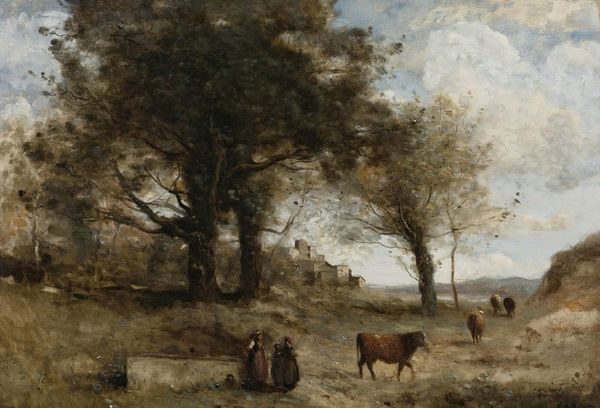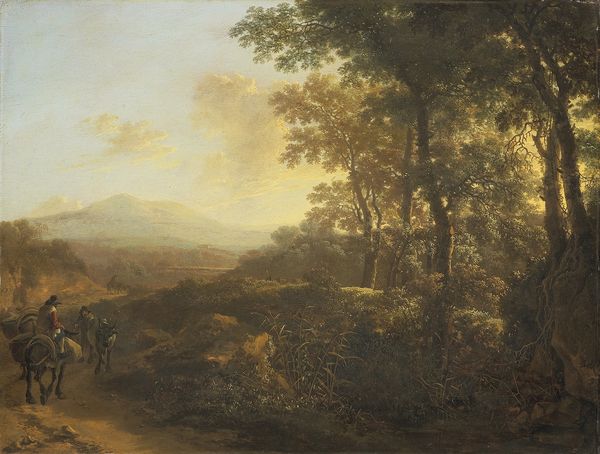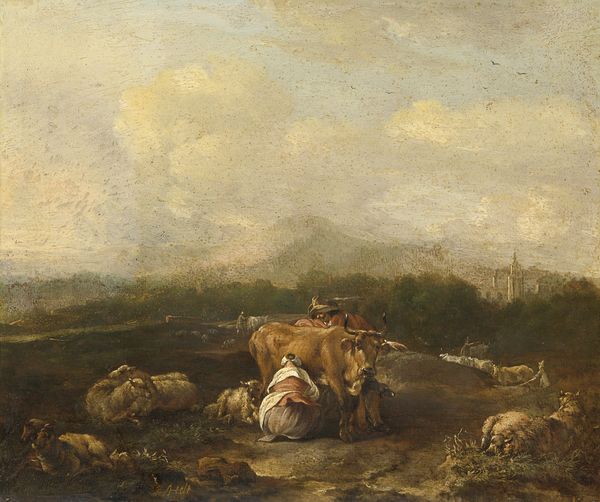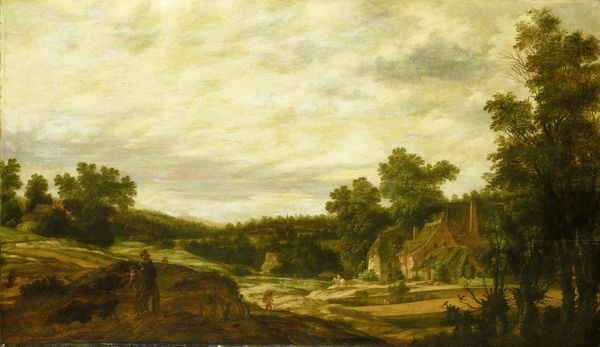
painting, oil-paint
#
painting
#
oil-paint
#
landscape
#
impressionist landscape
#
oil painting
#
romanticism
#
genre-painting
#
history-painting
#
watercolor
#
realism
Copyright: Public domain
Editor: This is "On the Road" by Jules Dupré, an oil painting. There's a certain melancholy in the muted colors and the worn path. How do you interpret this work, especially considering the context of its creation? Curator: This piece resonates deeply with the 19th-century anxieties around industrialization and rural displacement. Look at the way the road dominates the composition, leading our eye away – it speaks to a world in motion, but perhaps not for the better for those traveling on it. Who do you think these figures are? Are they migrants? Economic refugees perhaps? Editor: They could be. I see them almost swallowed by the landscape, really emphasizing the smallness of the individual. Is that typical of Romanticism, to highlight the power of nature? Curator: Absolutely, but I would push us to think about the social dimensions. Romanticism, particularly in landscape painting, was often intertwined with nationalist sentiment, projecting ideals of "natural" beauty onto territories, often displacing or erasing the experiences of marginalized communities. Do you notice how little we see of the driver’s faces? Editor: That's true, they're very anonymous. So the focus is less on individual stories and more on the collective experience of, say, rural workers during this era? Curator: Precisely! And what that might mean in the grander scheme of exploitation, labor and gender roles, and other considerations within a deeply class-based society. It's a genre painting but also speaks to significant societal transformations. It's romantic in style, realistic in its depictions, yet both are situated firmly in a class-divided social structure. Editor: I see it now. The painting isn't just a pretty landscape, but a commentary on the social upheaval of the time, representing both movement and a kind of marginalization. It definitely adds a whole new dimension. Curator: Exactly. Looking at art this way can offer valuable insight. Thanks for a stimulating discussion!
Comments
No comments
Be the first to comment and join the conversation on the ultimate creative platform.
